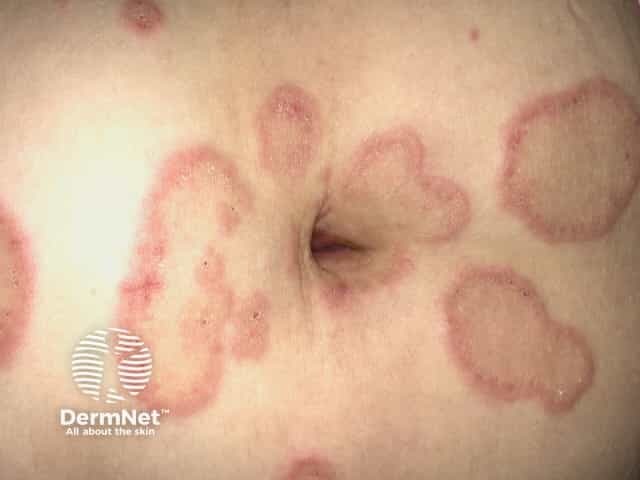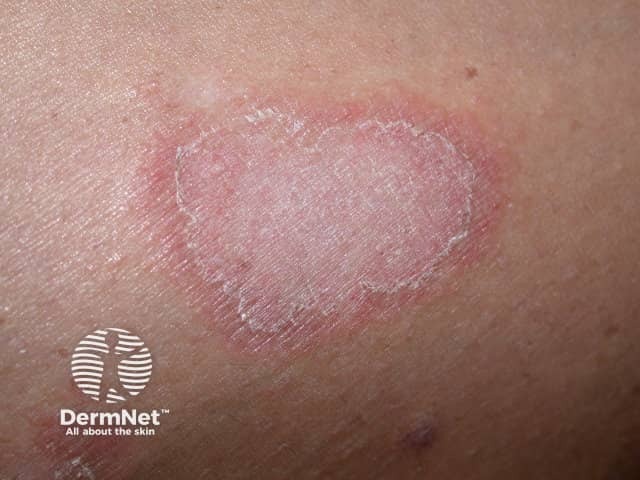Main menu
Common skin conditions

NEWS
Join DermNet PRO
Read more
Quick links
Author: Vanessa Ngan, Staff Writer, 2003. Updated by A/Prof Amanda Oakley, July 2015.
Annular erythema is a descriptive term that refers to a number of chronic annular and erythematous skin eruptions. Other descriptive terms used to classify these types of lesions include:
Erythema gyratum repens is often classified separately.

Annular erythema

Annular erythema

Annular erythema close-up
See more images of annular erythema.
Annular erythema may occur at any time throughout life, from infancy to old age. The eruption usually begins as a small raised pink-red spot that slowly enlarges and forms a ring shape while the central area flattens and clears. There may be an inner rim of scale. The rings enlarge at a rate of about 2–5 mm/day until they reach a diameter of about 6–8 cm. Sometimes the lesions do not form complete rings but grow into irregular shapes. One or several lesions may be present.
Annular erythema most often appears on the thighs and legs, but may occur on the face, trunk and arms. The lesions rarely cause symptoms but in some patients may cause mild itching or stinging.
Often no specific cause for the annular erythema is found. However, it has been noted that annular erythema is sometimes linked to underlying diseases and conditions. These include:
In these situations, the annular erythema resolves once the underlying cause is treated or the causative drug is stopped.
The diagnosis of annular erythema is made clinically and may be confirmed by histopathology, which shows a perivascular lymphocytic infiltration.
Further investigations may be carried out to exclude other causes of annular rashes and to look for an underlying cause if any.
Differential diagnosis of annular erythema includes:
Annular erythema usually clears up by itself. Eruptions may last for a few weeks to many years (the average duration is 11 months). Most cases of annular erythema require no treatment (and no curative therapy is known). However, topical corticosteroids may be helpful in reducing redness, swelling and itchiness.